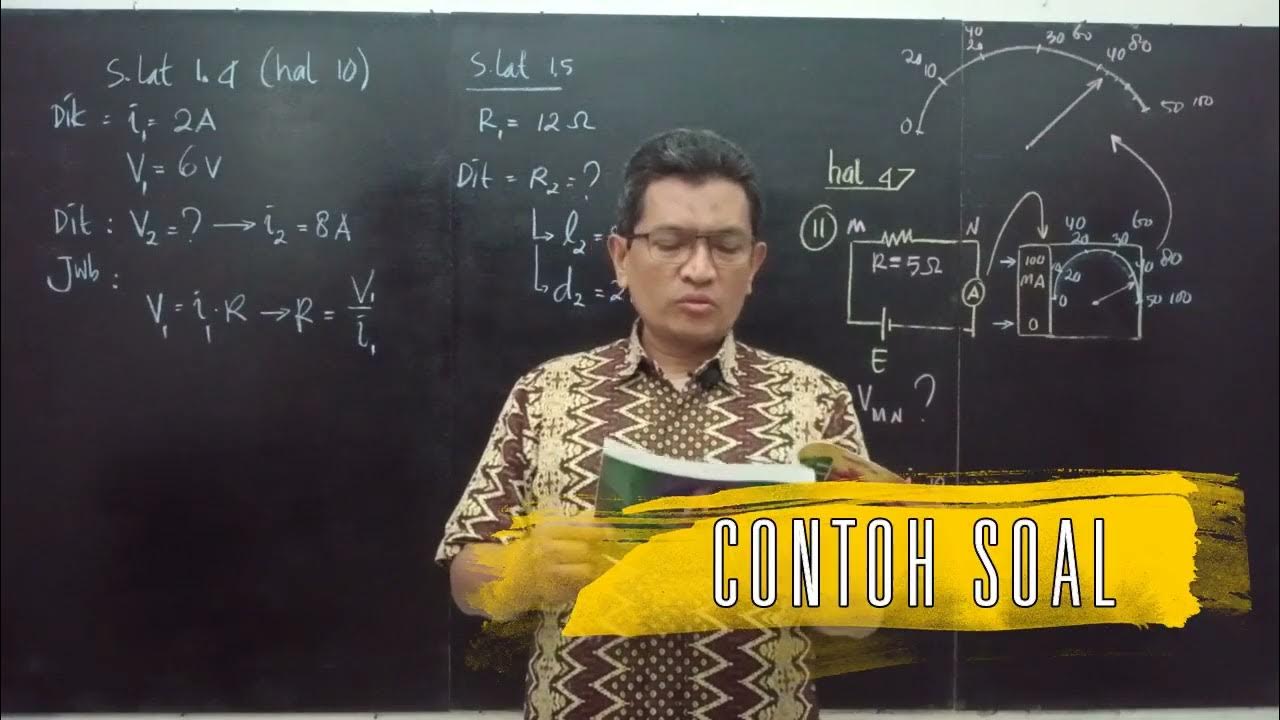HOW TO CONNECT OHM'S LAW CIRCUIT IN 4 MINS | BOARD PRACTICAL | ELECTRICITY DEMO | STD 10-12 PHYSICS
Summary
TLDRThis video demonstrates how to connect an Ohm's Law circuit in under five minutes, serving as a practical experiment for electricity concepts and a standard 10th-grade practical. The presenter explains step-by-step how to make connections between a battery, ammeter, resistor, rheostat, and voltmeter, emphasizing the importance of correctly connecting the positive and negative terminals. The voltmeter is connected in parallel across the resistor. The video provides a clear and concise explanation of the circuit setup, ensuring viewers can replicate the experiment successfully.
Takeaways
- 🔧 The video demonstrates how to set up an Ohm's Law circuit within 5 minutes.
- 🔋 Connect the positive terminal of the battery to the positive terminal of the ammeter.
- 🔴 The red terminal is positive, and the black terminal is negative.
- 🛠️ The negative terminal of the ammeter should be connected to one end of the fixed resistor.
- ⚡ The resistor's other end is connected to two terminals of the rheostat.
- 🔄 The other terminal of the rheostat connects to the negative terminal of the battery.
- 📏 The voltmeter is connected in parallel across the unknown resistor.
- 🔗 The positive terminal of the voltmeter is connected to the terminal where the current enters the resistor.
- ⚙️ The negative terminal of the voltmeter is connected to the terminal where the current leaves the resistor.
- ✅ The circuit is completed, and the explanation demonstrates how the current flows from the battery through the circuit.
Q & A
What is the purpose of the video?
-The purpose of the video is to demonstrate how to connect an Ohm's law circuit in under five minutes, explaining the steps involved in setting up the electrical experiment.
What kind of experiment is being shown in the video?
-The video shows an electricity experiment related to Ohm's law, which is also a standard practical for the 10th-grade board curriculum.
What is the first step in setting up the Ohm's law circuit?
-The first step is to connect the positive terminal of the battery to the positive terminal of the ammeter, ensuring that the red terminal is positive and the black one is negative.
What should be done after connecting the positive terminal of the ammeter?
-After connecting the positive terminal of the ammeter, the negative terminal of the ammeter should be connected to one end of the unknown resistor whose value is fixed.
How should the resistor be connected in the circuit?
-The terminal of the resistor where the current enters should be connected to the positive terminal of the voltmeter, while the terminal where the current leaves should be connected to the negative terminal of the voltmeter. The voltmeter is connected in parallel across the resistor.
What is the role of the rheostat in the circuit?
-The rheostat helps regulate the current flowing through the circuit by being connected between the resistor and the battery.
Why is it important to ensure the connections are tight?
-Tight connections are crucial to prevent resistance at the contact points, which could affect the accuracy of the experiment and the overall functioning of the circuit.
How does the electric current flow in the circuit?
-The electric current flows from the positive terminal of the battery to the positive terminal of the ammeter, then through the resistor and the rheostat, and finally back to the negative terminal of the battery.
How is the voltmeter connected in the circuit?
-The voltmeter is connected in parallel across the unknown resistor. The positive terminal of the voltmeter is connected to the side of the resistor where the current enters, and the negative terminal is connected to the side where the current exits.
What is the significance of connecting the voltmeter in parallel across the resistor?
-Connecting the voltmeter in parallel across the resistor allows it to measure the potential difference (voltage) across the resistor without affecting the current flowing through the circuit.
Outlines

このセクションは有料ユーザー限定です。 アクセスするには、アップグレードをお願いします。
今すぐアップグレードMindmap

このセクションは有料ユーザー限定です。 アクセスするには、アップグレードをお願いします。
今すぐアップグレードKeywords

このセクションは有料ユーザー限定です。 アクセスするには、アップグレードをお願いします。
今すぐアップグレードHighlights

このセクションは有料ユーザー限定です。 アクセスするには、アップグレードをお願いします。
今すぐアップグレードTranscripts

このセクションは有料ユーザー限定です。 アクセスするには、アップグレードをお願いします。
今すぐアップグレード関連動画をさらに表示

IPA Kelas 9 : Listrik Dinamis 2 (Rangkaian Listrik : Hukum Ohm dan Hukum Kirchhoff)

Praktikum IPA SMP - Listrik Dari Buah

Experimental Verification Of Ohm's Law and Finding Unknown Resistance | BOARD PRACTICAL | Std 10-12

What Is a Diode?

HUKUM OHM & HAMBATAN KAWAT | Rangkaian Listrik Arus Searah - Fisika Kelas 12

Basics of Electricity-Part A [Voltage, Current, Resistance, and Ohm's Law]
5.0 / 5 (0 votes)
